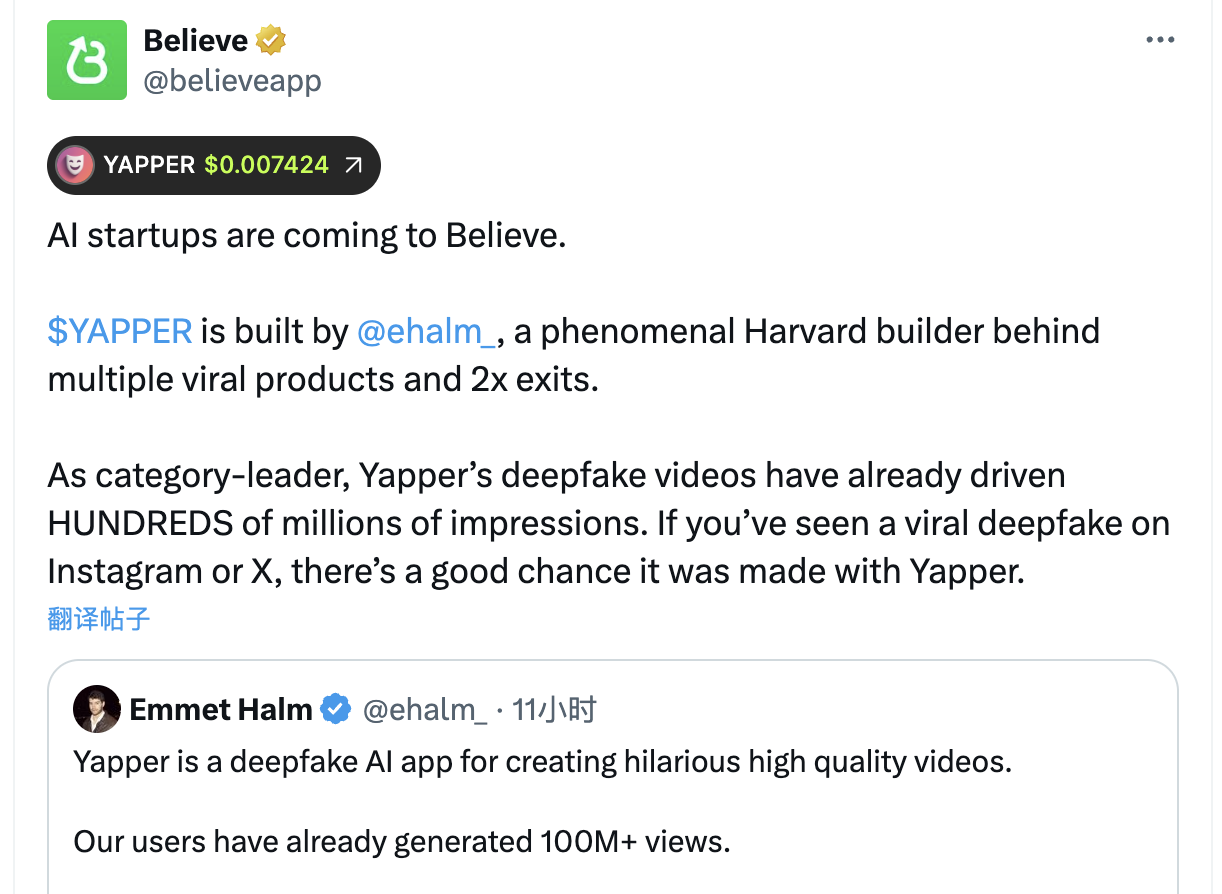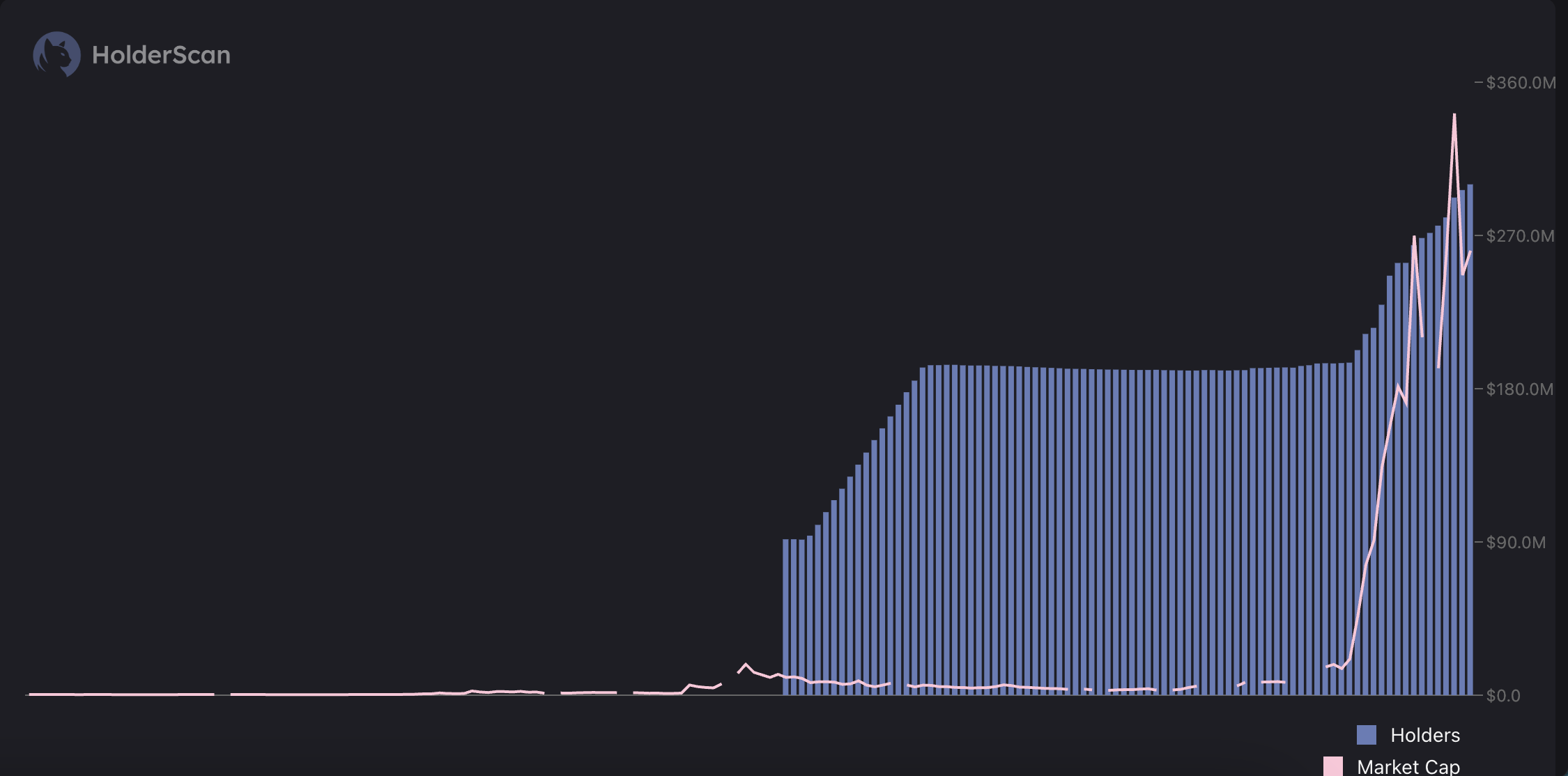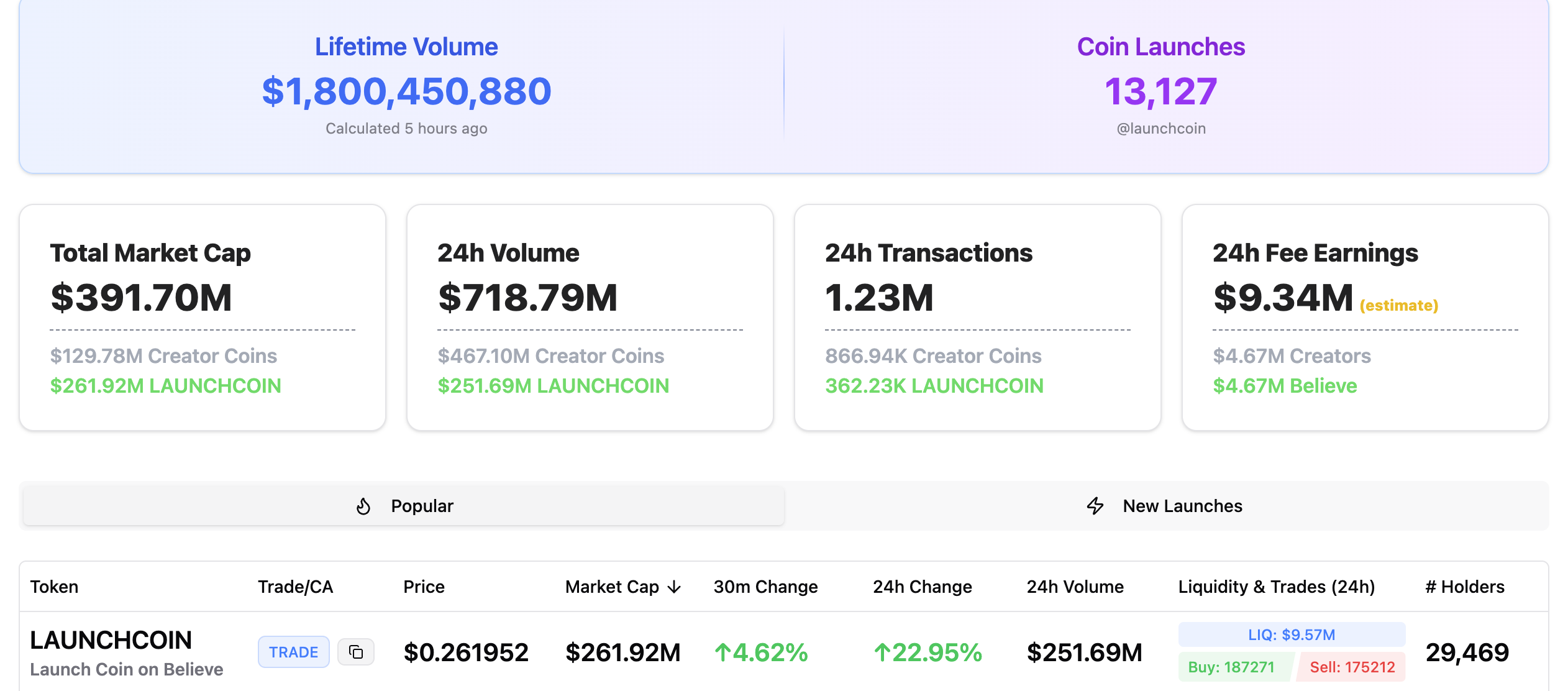Author: Nancy, PANews
Believe is currently facing a backlash in traffic. With the aggressive surge of its platform token LAUNCHCOIN, the introduction of high-speed trading volumes in the tens of millions, and the appeal of numerous Web2 entrepreneurs, Believe recently seized the spotlight in the Launchpad melee, becoming a focal point of attention. However, behind the excitement, issues such as high platform fees, frequent "knife scraping" phenomena, and a lack of sustainable narratives have gradually emerged, leading to a rapid increase in community FUD (fear, uncertainty, doubt) sentiment.
YAPPER's Plunge Sparks FUD, Multiple Risks Loom for Believe Ecosystem
$YAPPER is the trigger for the FUD storm surrounding the Believe ecosystem. According to reports, Yapper is a deepfake AI application designed for creating humorous high-quality videos, with platform users generating over 100 million views. Its founder, Emmet Halm, previously founded the online tutoring company The Massapequa Tutor and the college application platform Acceptitas, both of which have been acquired.

Halm's entrepreneurial experience in the Web2 space quickly brought attention to the token $YAPPER, even receiving multiple retweets of support from Believe's official account, pushing its market cap to briefly exceed $28 million. However, GMGN data shows that as of the time of writing, the price of $YAPPER has dropped by as much as 75.62% from its peak.

This decline is not coincidental and is influenced by multiple factors: on one hand, Halm has been accused of participating in the operation of another token $STEALTH within the Believe ecosystem, which shares the same logo as Halm's Stealth Startup. In response to the controversy, the $STEALTH official vaguely stated, "This is not plagiarism, nor does it represent a connection, because this logo itself is a common symbol for many 'stealth entrepreneurs', like a signal for an entrepreneur 'invisible'."
Moreover, Halm's entrepreneurial background has also sparked controversy. According to foreign media The Harvard Crimson, Halm, who claims to be a Harvard dropout and crypto entrepreneur, used the slogan "Harvard students help you get into school" when founding Acceptitas, attracting a large number of clients and mentors. However, after the company was acquired, Halm failed to ensure a proper handover, leading to many mentors being owed salaries and clients left without refunds, which raised legal and ethical questions.
On the other hand, the issuance of $YAPPER continued the high fee and scraping phenomena of the Believe platform, resulting in significant losses for retail investors who bought at high prices. The excessively high fee ratio on Believe not only caused severe capital outflow but also led to high trading costs for users. According to crypto researcher 0xLoki, the core issue of Believe is highly consistent with that of FriendTech at the time: the net fee (which does not remain within the ecosystem) is too high, with 4% lost on each buy and sell (Believe charges a 2% trading tax). If we simply estimate based on the current cumulative trading volume of the Believe ecosystem of $16.78 billion * 2%, the net fee has already exceeded $33 million. The trading ratio of Pump.fun is estimated at 1:3, with the actual net fee rate (net fee/total trading volume) = 1% * (1/4) = 0.25%. It appears that the trading fee rate is 1:2, but the actual net fee rate is 1:8.
"Trading volume over 100 million, market cap less than 10 million, what does that indicate? It indicates that the whales directly poured in when retail investors were most FOMOing into the trading volume," pointed out crypto KOL @xingpt. Additionally, because Believe allows for the rapid creation of tokens through social tags, this method often leads to new tokens being "scraped" (the act of bots quickly buying tokens at the moment of issuance or trading opening) at low prices, which are then quickly pushed up in market cap before being "poured" (rapidly raised and distributed) to the market, leaving retail investors who FOMO chase high prices often as the ones left holding the bag. Data shows that in the past 24 hours, over half of the tokens on the Believe platform have dropped by more than 50%.
Major Players Drive Over 300x Surge, LAUNCHCOIN Contributes Over Half of Ecosystem Market Cap
PANews previously reported that Believe was originally PASTERNAK, a celebrity token created by Clout founder Ben Pasternak, which launched in January 2025. Clout is a SocialFi platform that combines features from platforms like Friend.Tech, Pump.fun, and Moonshot, allowing celebrities and creators to issue tokens named after themselves.
With backing from institutions like Alliance DAO, PASTERNAK once saw a surge in popularity, with its market cap briefly reaching tens of millions of dollars. However, following a market correction and technical issues on the platform, the price of PASTERNAK subsequently plummeted, dropping to hundreds of thousands of dollars at its lowest. Furthermore, the second token issued on Clout, $IMRAN (named after the founder of Alliance DAO), also saw a price crash, exacerbating the market's loss of confidence in PASTERNAK.
After a period of silence, on April 29, PASTERNAK announced its rebranding to "Launch Coin on Believe" and leveraged LAUNCHCOIN's aggressive surge to regain traffic.

GMGN data shows that since the rebranding announcement on April 29, LAUNCHCOIN's market cap has surged to over $360 million, with a peak return rate close to 321 times, demonstrating strong market explosiveness and capital enthusiasm.

From the change in holding addresses, Holderscan data indicates that the number of addresses holding LAUNCHCOIN saw a significant inflection point on May 1, when the market cap surpassed $20 million, and user entry accelerated significantly, with capital attention notably increasing. After nearly ten days of sideways consolidation, LAUNCHCOIN began to accelerate its volume increase on May 11, with its market cap rapidly rising and reaching a new high for the phase.
On-chain data analysis shows that LAUNCHCOIN currently exhibits a highly controlled market situation, with the top 100 addresses controlling over 54% of the circulating tokens, indicating a clear concentration of holdings. This structure suggests that price fluctuations may be "artificially" influenced, with major funds possessing strong operational capabilities and influence.
In terms of holding amount distribution, the overall average holding amount is about $9,100; if we exclude the top 100 addresses, the average holding amount for the remaining nearly 29,000 addresses drops to about $5,600, indicating that the holdings of ordinary token holders are relatively limited, and most investors are small to medium retail investors.
Overall, LAUNCHCOIN exhibits a typical pattern of "major player control + retail following," where major funds drive market sentiment, attracting a large number of retail investors to enter.

From the overall situation of the Believe ecosystem, as of now, the platform has issued over 13,000 tokens, with a total market cap of over $390 million, of which LAUNCHCOIN alone contributes about 67.2% of the market cap. Additionally, in the past 24 hours, LAUNCHCOIN's trading volume accounted for 35% of the overall ecosystem. It is evident that the popularity of the platform token heavily relies on the market performance of LAUNCHCOIN. However, this platform token has been criticized for lacking dividends and practical application scenarios, leading to significant community doubts about its long-term sustainability. Once market enthusiasm wanes, investor confidence may quickly decline, posing a risk of a stampede.
Amid multiple market concerns, Ben Pasternak has taken to social media to respond, stating that the past few days have been very crazy, and he is very grateful for the energy behind the project's vision. The team has seen a surge in interest from founders, but will temporarily not push new projects in the recommendation section, instead focusing on supporting projects that are already under construction. The primary task for Believe is to ensure they have the tools and resources needed for success.
Overall, projects that truly possess the ability to transcend cycles will ultimately return to fundamentals: product experience, mechanism innovation, and community trust. What Believe needs to face next is not just how to maintain market enthusiasm, but how to emerge from the "coin-making frenzy" on a sustainable path.
免责声明:本文章仅代表作者个人观点,不代表本平台的立场和观点。本文章仅供信息分享,不构成对任何人的任何投资建议。用户与作者之间的任何争议,与本平台无关。如网页中刊载的文章或图片涉及侵权,请提供相关的权利证明和身份证明发送邮件到support@aicoin.com,本平台相关工作人员将会进行核查。



